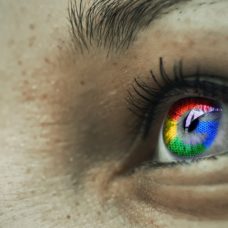A team of scientists from the University of Sheffield and Rutherford Appleton Laboratory has discovered a breakthrough compound that kills antibiotic-resistant superbugs, including the dreaded pathogenic Escherichia coli (E. coli).
Called dinuclear Ru(II) complex, the chemical compound was developed by Ph.D. student Kirsty Smitten. It is still being tested, but the team’s leader, Professor Jim Thomas, already expressed his excitement about the potentials of the new drug compound.
Prof. Thomas said:
“This breakthrough could lead to vital new treatments to life-threatening superbugs and the growing risk posed by antimicrobial resistance.”
Initial studies at RAL and Sheffield revealed that the compound has many different modes of action which make it difficult for bacteria to develop resistance.
Killing Antibiotic-Resistant Superbugs
To date, gram-negative bacteria like E. coli have been the leading cause of many common and deadly infections in humans like pneumonia, urinary tract infection, and septicemia.
Killing gram-negative bacteria is no easy feat. Over the years, they were able to block drugs from reaching the microbes they carry. Eventually, they evolved into a new form of bacteria, now known as antibiotic-resistant superbugs.
In the European Union alone, 25,000 deaths are reported to be due to antimicrobial resistance. Experts have estimated that if this health problem continues, the death toll due to antibiotic-resistant bacteria may rise to 10 million people every year by 2050.
Despite the ongoing efforts of pharmaceuticals and scientists around the world to expedite the process of developing a drug that can shut down these superbugs, no potential drugs have entered clinical trials since 2010.
New Hope
The new compound developed by the British researchers can be a game changer. Prof. Thomas explained:
“We played about with the structure and tried to make it so it would be preferentially taken up by the bacteria. We ended up with something that was toxic towards bacteria, particularly gram-negative bacteria, and not toxic towards humans.”
The team reportedly tested the drug compound on wax moth larvae which turn a shade darker when they are ill. This made it easier for the team to observe the compound since it glows when exposed to light.
“As the compound is luminescent, it glows when exposed to light. This means the uptake and effect on bacteria can be followed by the advanced microscope techniques available at RAL.”
Prof. Thomas and his colleagues are now planning to move to mammal testing, and hopefully, human clinical trials in the future. Their research has been published in the journal ACS Nano.



















Comments (0)
Least Recent